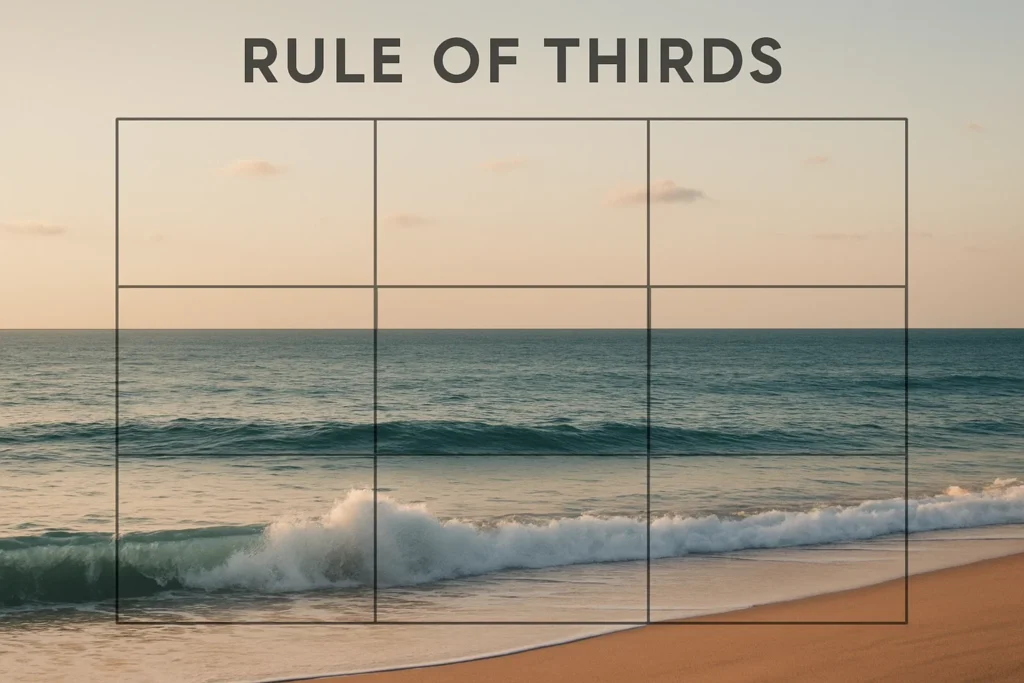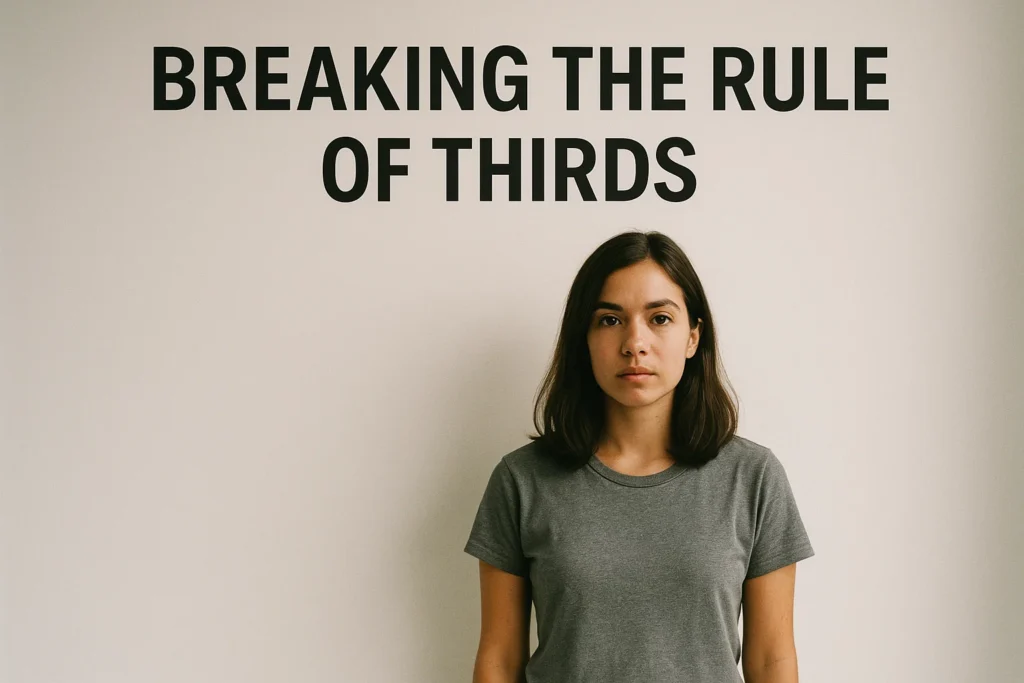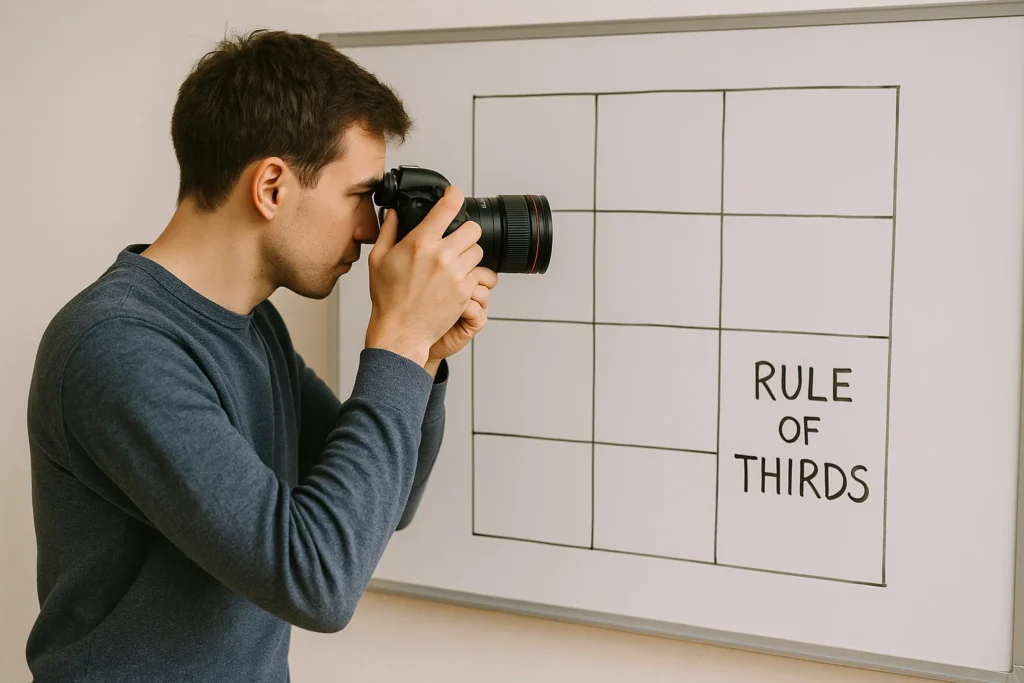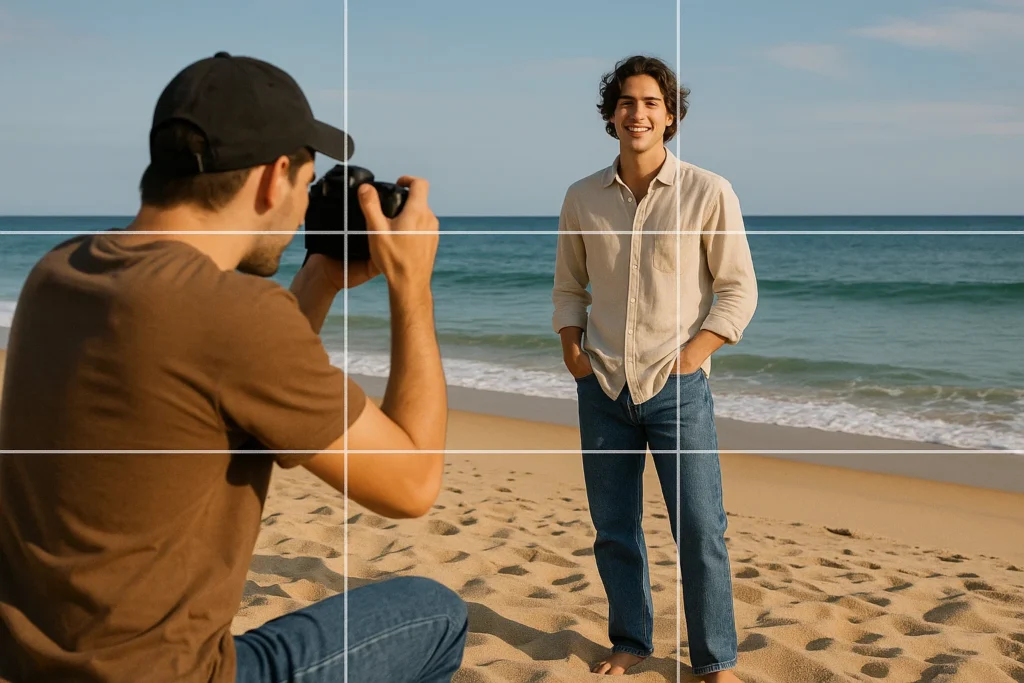Table of Contents
This blog post may contain affiliate links. As an Amazon Associate I earn from qualifying purchases.
The Rule Of Thirds Explained: A Photographer’s Ultimate Guide

The rule of thirds is one of the most fundamental—and flexible—composition techniques in photography. Whether you’re a beginner or looking to refine your visual sense, understanding the rule of thirds helps you create more balanced, dynamic, and engaging images.
Featured Snippet Answer
The rule of thirds divides a frame into a 3×3 grid (two equally spaced horizontal and vertical lines). Positioning key visual elements along these lines or at their intersections tends to produce a more pleasing composition than placing the subject dead center.
What Is the Rule of Thirds?
At its core, the rule of thirds proposes that an image feels more natural and visually interesting when you avoid centering your subject. Instead, you divide your frame into nine equal zones using two horizontal and two vertical lines, then align important elements with those lines or the intersection points. Wikipedia+2PetaPixel+2
These four intersection points (sometimes called “power points”) become focal areas to place your subject — like positioning a person’s eyes or a building façade. Digital Photography School+2PetaPixel+2
Why the Rule Works (And When It Doesn’t)
What Makes It Effective
- Visual balance & tension: Placing a subject off-center gives other parts of the frame room to breathe, creating harmony rather than rigid symmetry. Digital Photography School+2PetaPixel+2
- Natural eye movement: Our eyes often wander to intersections rather than the absolute center. Setting the subject there helps guide the viewer. PetaPixel+1
- Dynamics & flow: Centered compositions can feel static. Off-center subjects draw the viewer’s gaze through the frame. Digital Photography School+1
When to Break the Rule

While it’s a strong guideline, many great photos deliberately ignore it. Use these exceptions when:
- You’re aiming for symmetry or a strong central composition
- Your subject fills most of the frame (macro, portraits)
- The scene demands emotional or aesthetic impact that defies convention
- You’re working with very minimal elements (negative space, abstract shapes)
Adobe affirms the rule is a guide, not a law — and sometimes breaking it yields a more compelling photograph. Adobe+1
How to Use the Rule of Thirds in Practice

Enable a Grid Overlay
Most cameras and smartphones let you display a thirds grid in your viewfinder or on the LCD. Enabling this makes applying the rule intuitive as you shoot. Adobe+2Photography Life+2
Align Horizons and Vertical Lines
- In landscapes, place the horizon on the top or bottom horizontal third, not in the center.
- For architecture or city scenes, align strong vertical lines (buildings, poles) with the vertical thirds.
Position Subjects at Intersections
Place your main subject (eyes, head, focal point) near one of the four intersections. The “looking into space” approach works well — the subject should look toward the open portion of the frame. PetaPixel+2Digital Photography School+2
Composing While Cropping
Even if the original shot wasn’t composed using thirds, you can retune composition during post-processing by cropping and aligning key elements to the thirds grid. Photography Life+1
Examples & Use Cases
- Portraits / People: Place the person’s eyes on the upper horizontal third, and body or limbs along vertical thirds.
- Landscapes: Combine sky and land along horizontal thirds. Include foreground interest near lower third, horizon on upper third.
- Abstract & Minimal: Use one third for the subject and let negative space fill the rest to emphasize isolation or simplicity.
Nicholas Goodden notes that many photographers unconsciously use thirds — the guideline becomes intuitive over time. nicholasgooddenphotography.co.uk
Tips to Train Your Eye
- Practice routinely: Take 20 photos using the rule, then break it in 20 more.
- Study others’ work: Overlay a thirds grid on iconic photos and observe their compositions.
- Use guides while editing: Crop tools often include a grid overlay you can toggle.
- Learn related rules: Golden Ratio, rule of odds, diagonals, leading lines — composition is a toolbox, not a single tool. Wikipedia+2Wikipedia+2
Frequently Asked Questions
Is the rule of thirds just for beginners?
No. Even advanced photographers use it as a compositional baseline before deciding to break it.
Why is centering a subject often criticized?
Centering can make the image appear static and limit visual flow — viewers tend to disengage quickly.
Does the rule of thirds apply to video or film?
Yes — cinematographers use it to guide compositions and maintain visual interest. Wikipedia+2Wikipedia+2
Is the rule of thirds scientifically proven?
It’s more empirical than scientifically rigorous. Some suggest it’s a simplified descendant of the Golden Ratio. Photography Stack Exchange+2Photography Workshops+2
Should I force every photo to follow it?
No. Use it as a strong starting option, but be ready to shift or break it when your vision demands.
How do I place the subject for action or movement?
Place moving subjects toward the lead side — i.e., allow them space to “move into” the frame rather than out of it.
Final Thoughts & Practical Challenge

The rule of thirds is a powerful starting point — a way to guide your compositions and avoid boring center placements. But mastery lies in knowing when to break it, adapt, and follow your creative instinct.
Challenge: For your next photo walk, take two sets of 25 images: one set composed strictly with the rule of thirds, another set composed intentionally without it. Later, compare which feel stronger and why. Over time, this practice will sharpen your visual intuition.
Brought to you by Amateur Photographer Guide — your source for practical wisdom, gear guidance, and photographic growth.

